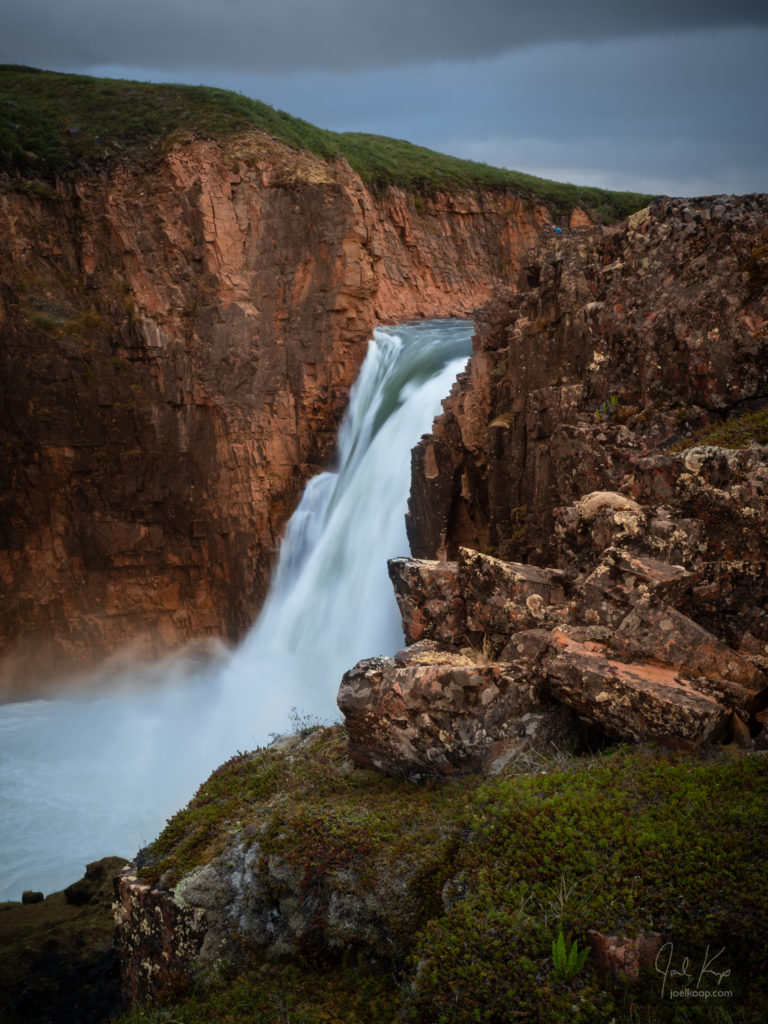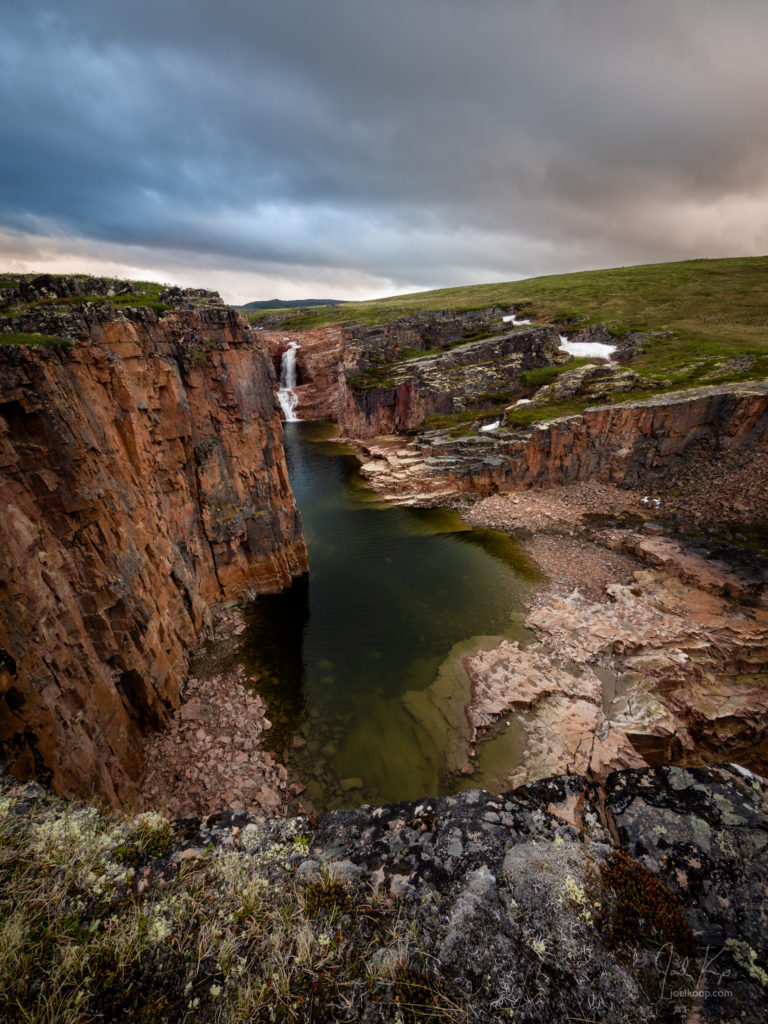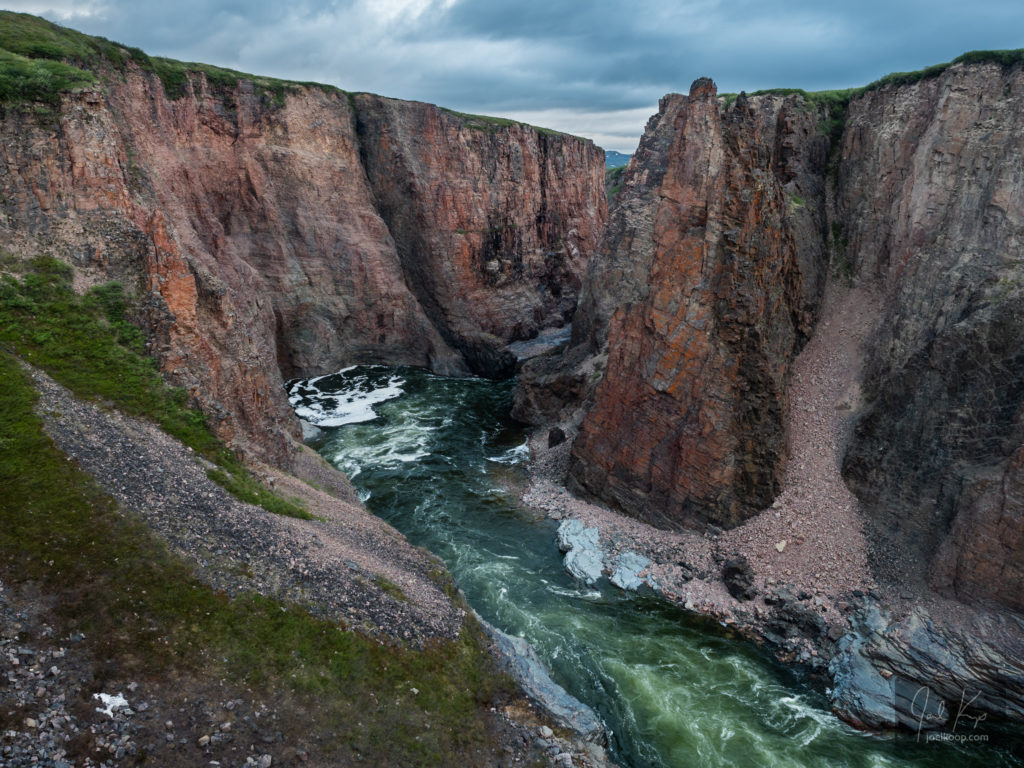Eric enjoying the view of the lower falls at Wilberforce.
Wilberforce Falls, near the end of the Hood River in Nunavut, is an experience – impossible to capture with pixels or describe with words. But I’ll still try. The river splits into two, flowing around a massive promontory of rock, plunging over 60m (200 feet) in two stages on both sides. The roar is so loud you have to yell to talk. Gusts of mist rise from the canyons below. Nesting peregrine falcons dive bombed us as we peered over the edges of cliffs to the water below. As with every spectacular experience, the time I had there was way too short.
The spot of blue is Annika peering over the cliff at one of the upper falls.
Posting pictures of this place (and many places) seems almost disrespectful. They are such a pale reflection of an actual experience. You see a pretty picture of water and rock and tundra. You don’t feel the bone-weary exhaustion of two weeks of canoe tripping. You don’t feel the anxiety of knowing the next day you will start to move all your canoes and gear across 12km of unknown tundra. You don’t feel the bittersweet feeling of leaving a river and the excitement of heading towards the arctic ocean. You don’t feel the frustration of never having enough time to appreciate the incredible places you’re breezing past.
The smaller side of the upper falls.
What am I trying to accomplish by taking photos of these places? Spreading the knowledge that there are incredible places shaped by incredible forces? Trying to get people to value and preserve wilderness? Encouraging others to have similar experiences? Bragging about my experiences? Trying to add something beautiful and wholesome to the fight for the soul of the internet?
I think understanding the value of wilderness is essential to the well-being and survival of humans. The value is in the beauty, in the feeding of the soul, in the ecosystem services it provides us, in the reminder that we are small, the knowledge that it was here long before us and will be here long after us, even in its own right to exist. Knowledge and understanding are so much deeper when they’re gained through experience instead of seeing photos or reading text online. This is why I also lead trips in the wilderness, despite the difficulty, risk, and expense. The difficulty, risk, and wilderness create a learning environment that teaches while it amazes. These experiences change lives.
Part of the canyon below the falls.
Bill Mason, the skilled canoeist, artist, and environmentalist, tried to paddle the canyon below the falls in the 1990s. He writes the incredible story in the book “First Descents: In Search of Wild Rivers”. Hopefully this google book link works for people – the story starts on page 81.



